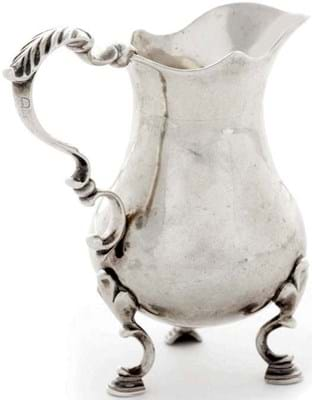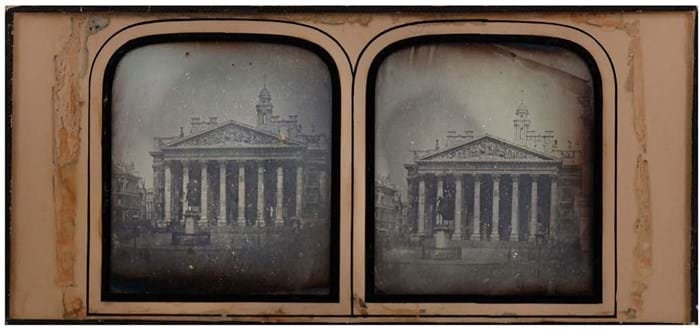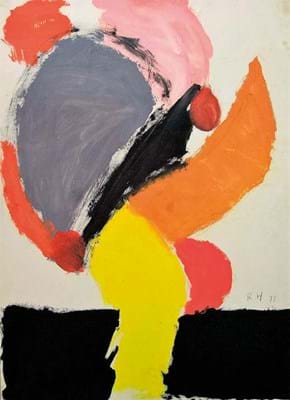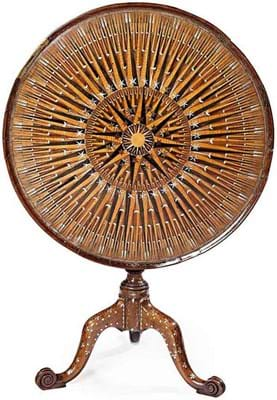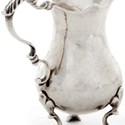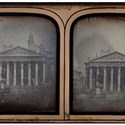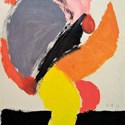Although Jamaican silver is some of the rarest colonial metalwork, it has been estimated that as many as 150 smiths were working there during the island’s height of trade with Europe and America.
A description of life in Port Royal at the end of the 17th century includes the line: “… Almost every house hath a rich Cupboard of Plate which they carelessly expose, scarce shutting their doors in the night, being no apprehension of thieves for want of receivers.”
For a short period of time between 1747 and c.1765 Jamaica had an assay master, the best-known being Anthony Danvers who took up the post in 1749. Most surviving Jamaican silver from this period carries the alligator’s head mark and his initials – including this cream jug c.1760 above which is expected to bring £2000-2500 at the Fine Interiors sale held by The Pedestal at the Moor Park Mansion, Rickmansworth, on November 19.
thepedestal.com or see this item on thesaleroom.com
This stereoscopic daguerreotype of the Royal Exchange, London, above, dates from c.1850.
The building has twice been destroyed by fire and rebuilt with the present building designed by Sir William Tite and opened by Queen Victoria on October 28, 1844. Trading commenced here on January 1, 1845, and it was presumably around then that this early architectural photograph was taken.
It carries an estimate of £3000-5000 at Chiswick Auctions on November 14.
chiswickauctions.com or see this item on thesaleroom.com
This untitled 2ft 6in x 22in (76 x 56cm) acrylic on paper abstract figural study by Roger Hilton (1911-75), above, is monogrammed RH and dated 1973.
It was a gift from Hilton to the novelist and poet Glyn Hughes (1933-2011) and comes together with copies of written correspondence between the two.
Authenticated by his wife Rose earlier this year, the picture will be offered by Gloucestershire saleroom Wotton Auction Rooms on November 19-20 with an estimate of £3000-5000.
wottonauctionrooms.co.uk or see this item on thesaleroom.com
The mother-of-pearl and wire inlay on this very British form of tripod table above suggests it may have been a specific commission. The use of star and crescent inlay is similar to that seen on Turkish firearms and hints at a possible Ottoman origin.
It comes for sale by descent from William King, 1st Earl of Lovelace, who was secretary to Lord Nugent, commissioner of the Ionian Islands, prior to 1833. While there, he travelled extensively, meeting Mehemet Ali, Pasha of Egypt.
As part of the Lyon & Turnbull sale in Edinburgh on November 20 titled Five Centuries: Furniture, Paintings & Works of Art, the estimate is £3000-5000.
lyonandturnbull.com or see this item on thesaleroom.com


